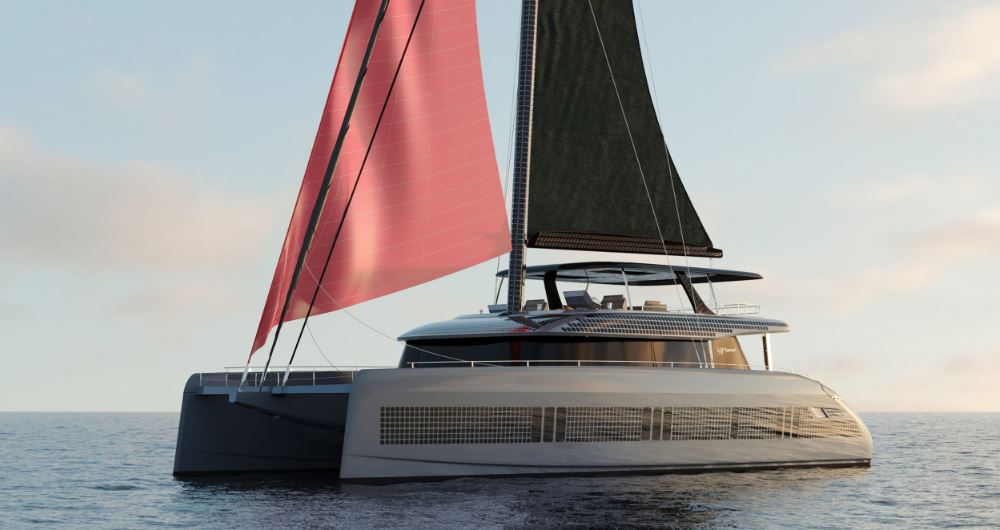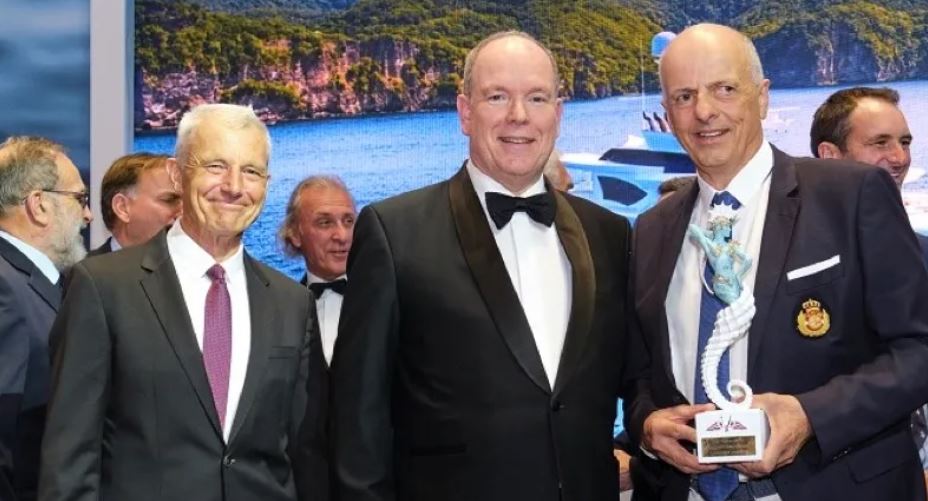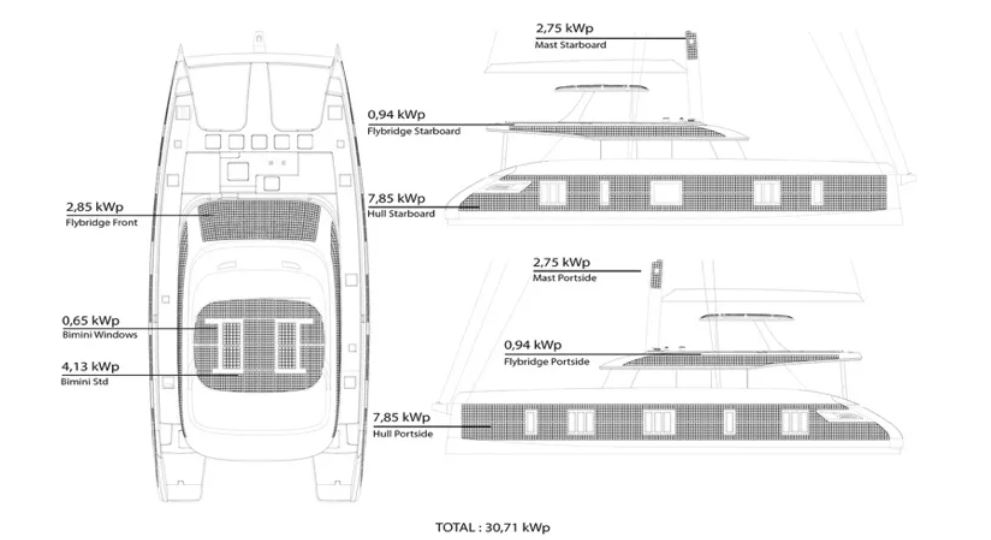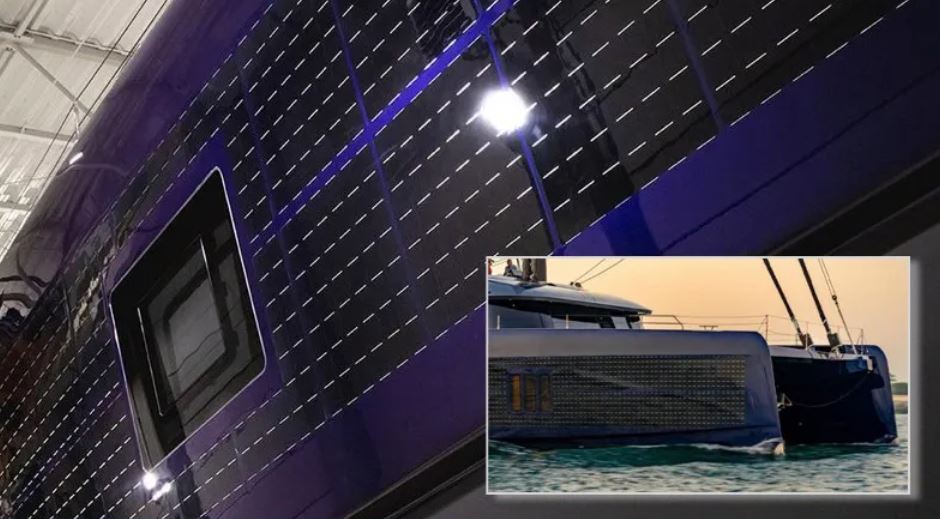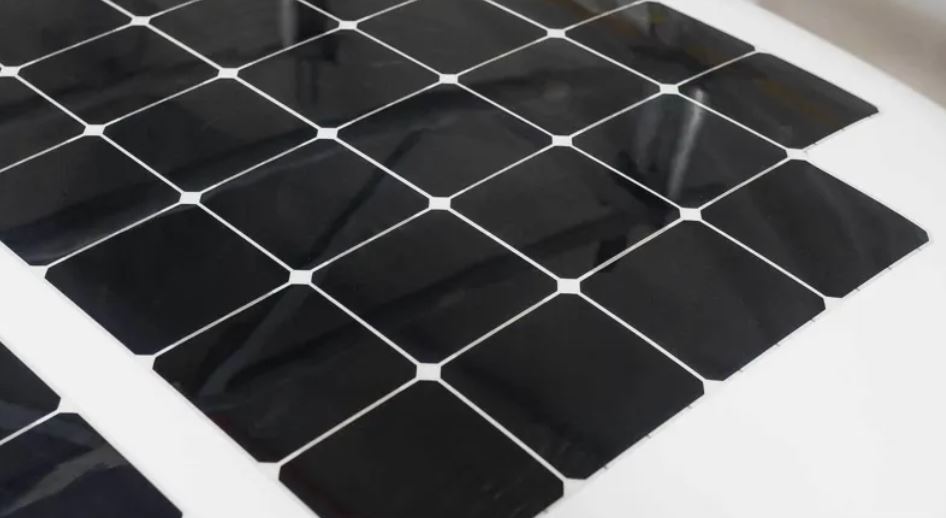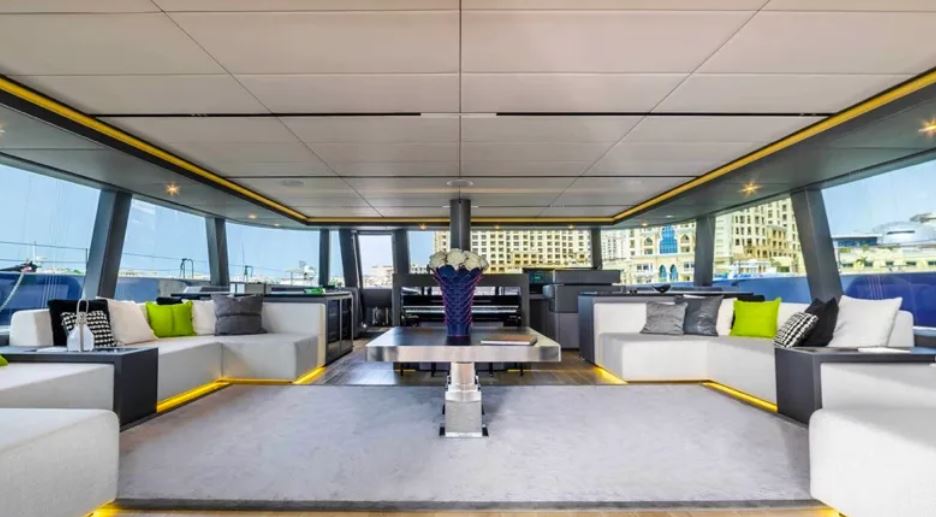Solar Skin Sunreef 80 ECO wins Monaco Award
The Sunreef 80 Eco has added to its awards case after being presented with a Yacht Club de Monaco Explorer Award by HSH Prince Albert II. Among its other honors, it had already received the German Design Award 2023 in the Excellent Product Design category and a First Place 2022 Gussies Award in the Electric Sailboats category.
The YCM Explorer Awards were founded in 2018 by Prince Albert II to recognize the most forward-thinking owners and most eco-responsible yachts in the industry. Sunreef Yachts Founder and President Francis Lapp received the award with the Sunreef 80 Eco winning in the Technology & Innovation category.
The Jury was surprised and impressed by the sheer number of eco-targeted innovations on the yacht, which includes the “solar skin” system with solar panels actually embedded throughout the hull and entire boat.
The total capacity of the energy generation on the yacht is 30kWp. kWp is short for kilowatts peak – how many watts per hour the panels will produce under optimal conditions.
The panels are situated on the main and flydeck roofs of the 80 Eco, as one would expect, but also on the side of the hulls, and even on the mast.
Starboard and Portside Hull: 7.85 kWp each = 15.7 kWp
Starboard and Portside Flybridge: 0.94 each = 1.88 kWp
Flybridge Front: 2.85 kWp
Bimini Standard: 4.13 kWp
Bimini Windows: 0.65 kWp
Starboard and Portside Mast: 2.75 each = 5.5 kWp
The solar skin came about when Francis Lapp was brainstorming with his son Nico – Vice President of Technology for Sunreef – about ways to continually improve every aspect of their recently introduced Eco range.
Custom-engineered batteries
The company had already spent hundreds of research and development hours on custom-engineering their batteries to improve energy density by 30% while also being able to retain 80 per cent of their charge after 10 years of use. The flip side of energy storage efficiency is energy generation efficiency, so they started talking about how that could be heightened.
Improved efficiency happens somewhat naturally, because there are improvements in solar cell technology just about every month, but they challenged themselves to ‘think out of the box’.
One of the benefits of a catamaran is that the wide beam provides a large surface for solar panels. Lapp senior had earlier come up with the idea of adding to that by fitting solar cells onto the masts of the Eco sailing yachts.
Then, in one of those eureka moments, they thought ‘if we can put solar cells into the mast…and on the surface of the roofs…why not incorporate them into the hull itself and make the whole yacht a giant solar panel generating electricity from every available surface?’
Multiple boxes to tick
Incorporating solar cells into the composite used to build a 24-meter yacht is easier said than done, but they set the R&D and engineering team to the task.
There were multiple goals that needed to be achieved before the idea could come to real life.
- The solar cells could not have any detrimental effect on the strength of the composite.
- The cells themselves had to be able to withstand the same stresses and wear and tear that a large yacht is designed to encounter.
- The cells could not add to the weight of the hull, as weight is an important element in maximizing energy used for propulsion.
Finally, the cells could not detract at all from the high design standards and look of a Sunreef product. They had to do quite the opposite in fact and enhance the look. The Lapps are strong believers that any sustainability technology has to have visual appeal and a ‘cool’ sensibility for it to be adopted and sought after by consumers.
Cool visual appeal is a must-have
Then in April 2021, the company made its announcement:
“Using ultra-thin, shock resistant and highly-efficient solar cells, Sunreef has developed the industry’s first composite-integrated photovoltaic technology.
The panels are entirely flush with all curved composite structures including masts, hull sides and biminis.
With a thickness of less than 1mm and weighing 1,8 kg/m², (average solar panels will weigh between 8 and 15 kg per square meter), the system is the lightest marine photovoltaic solution and uses panels delivering a peak performance of 24%. In addition, the integration technique gives the panels an extremely high resistance to shock and abrasion.”
Nico Lapp has attested to that high resistance. He told Justin Ratcliffe of SuperYacht Times “We did some tests with a hammer – more professional tools as well! – but literally banging with a hammer. We scratched the paint a bit, as you would with a normal hull, but after polishing it, it was like new.”
One of the surprising results of the solar skin is the improvement in the overall weight/energy ratio for the yacht. The weight of all the solar cells providing electricity through their placement throughout the boat is actually less than a diesel-burning generator.
Sheer number of eco-innovations on Sunreef 80 Eco
The solar skin in itself might have been enough for the Jury in the Explorer Awards to favor the Sunreef 80 Eco, but as we noted, they were impressed by “by the sheer number of eco-targeted innovations”.
The batteries of the 80 Eco have a storage capacity of 550 kiloWatt hours. They power two 180 kW electric motors with hydrogenerating capabilities that can recharge the battery with up to 15 kWh of energy when the boat is sailing under wind power at any speed above 7 knots.
Then there is the sustainability factor of the building materials. The hull composite that the solar cells are integrated into, as well as the superstructures and yacht furniture, are made of basalt and linen-based fibers.
Basalt and linen-based composites
No greenhouse gases are released during the fabrication of basalt fiber, it presents no toxic reaction with air or water…and as a bonus it is noncombustible, explosion proof and outperforms glass fiber in terms of strength. The linen-based composites are produced from the flax plant. They are non-toxic, safe to produce and have a minimal carbon footprint.
Last but not least are the 150+ m² sails themselves, which are fully recyclable and ready to be turned into durable bags and accessories at the end of their sailing life. The presentation of the awards at the Yacht Club de Monaco is a fitting location for Francis Lapp. He started Sunreef in 2002 and presented the shipyard’s first luxury catamarans at the 2003 Monaco Yacht Show. He recounted recently that “There were other yards telling us, ‘Guys, you’re not going to make it through the year – there’s no market for luxury catamarans out there.’
Twenty years later it must have given him great pride and joy to be in the same setting to receive the Explorer Award for for Technology & Innovation. Congratulations to Francis, Nicolas and the entire Sunreef team for pushing the boundaries of electric boating.
